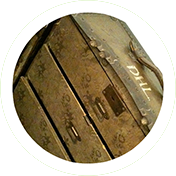
Geoff Dyer’s capacious meditation on endings meanders through a broad range of topics that include jazz, Dylan, movies, drugs, Nietzsche, Beethoven and, occasionally, Roger Federer. As disparate as these topics may seem, Dyer feeds them through a kaleidoscope, creating new and repeating patterns each time, so that each observation becomes an echo of a previous point. Or as he later puts it, ‘Knowledge has to be laid down in the brain in overlapping and criss-crossed layers. You need the underlay before you have the carpet.[i]’
Endings are determined by numerous factors. There is the realisation that the body can no longer do what the mind wants and, on some occasions, such as quitting, the mind can no longer do what the body desires. The motivation, ambition or stubbornness is gone. There is also knowing when to quit and when you are dragging something out. ‘The purpose of the one-book writer’s second book is to serve as a sort of confirmation that it’s all over[ii]’ he advises. Then there are those who can’t wait for the end, such as Dyer’s family, for whom retirement was ‘practically an ambition’ something ‘to look forward to’ after years of ‘unpleasant and unrewarding work[iii]’.
Dyer’s writing defies classification, shifting between criticism, memoir and repartee. These sudden shifts allow him to toy with his readers. He purports to take them in one direction while leading them in another. Indeed, he has taken the concept of endings and used it to begin his twentieth book. He is an unreliable, but very enjoyable, narrator.
Lawrence’s work is referred to at various places, the most relevant of which is The Ship of Death which Dyer describes ‘as near as we can get, in words, to experiencing the extinction of consciousness[iv]’. This feeds into a discussion of Beethoven which in turn is then linked to a scene in Aldous Huxley’s Point Counter Point (1928) when Mark Rampion, modelled on Lawrence, is listening to op. 132.
Unsurprisingly, Lawrence’s health – or rather his conviction that ‘however sick’ he would ‘become healthy again[v]’ gets a mention. But it is Dyer’s analysis of key lines in Lawrence’s work that gives me pause to put the book down on occasion and let an idea properly sink in. One such example is this wonderful line from Twilight in Italy: ‘we conceive the stars. We are told that they are other worlds. But the stars are the clustered and single gleaming lights in the night-sky of our world.’ Dyer considers this prophetic statement and wonders if the stars still seem like this, ‘not as dead memories of themselves, but living memories of our world.[vi]’
Nietzsche is central to Dyer’s subject, particularly his concept of the eternal recurrence which first appears in The Gay Science. It is ‘the moments you would happily live, over and over, throughout all eternity[vii]’ For Dyer this includes sex, lost opportunities and whether he remembered to switch the light off in the front room.
Dyer tells and retells the same theme – endings – over and over again from various perspectives which all neatly overlap and fold back into each other. You begin to wonder when the book will end which conjures memories of an observation he made in Out of Sheer Rage in 1997:
‘However much you are enjoying a book you are always flicking to the end, counting to see how many pages are left, looking forward to the time when you can put the book down and have done with it. At the back of our minds, however much we are enjoying a book, we come to the end of it and some little voice is always saying, ‘Thank Christ for that!’’
Fast forward to 2022 and these sentiments are given a darker twist when Dyer asks ‘could it be that our deepest desire is for everything to be over with?[viii]’
In some respects, Dyer’s eternal recurrence is the writing process and the conversations this affords with himself. He is happiest when indulging in clever wordplay, misremembering and then correcting himself, and his desire for constant self-reflection as he dismisses his latest book as ‘a diary of what the writer was up to during the period of its composition.[ix]’
Of course, completing a book is not an end. It’s the start of something new. ‘I’m not going to think about what to do when I finish it. Because I already know. I’ll fall into idleness, boredom, and depression before eventually and reluctantly embarking on the gruelling rehab of trying to start another.[x]’ And this, of course, is where he is closest in spirit to Lawrence: The compulsive need to record every experience and thought in words. For Lawrence this meant roving, using each new country as material for the latest novel. For Dyer, it is a philosophical conundrum: Do we finish books, or do they finish us?
References
[i] p.81
[ii] p.140
[iii] p.8.
[iv] p.32
[v] p.66
[vi] p.215
[vii] p.128
[viii] p.102
[ix] p. 173
[x] p. 174
